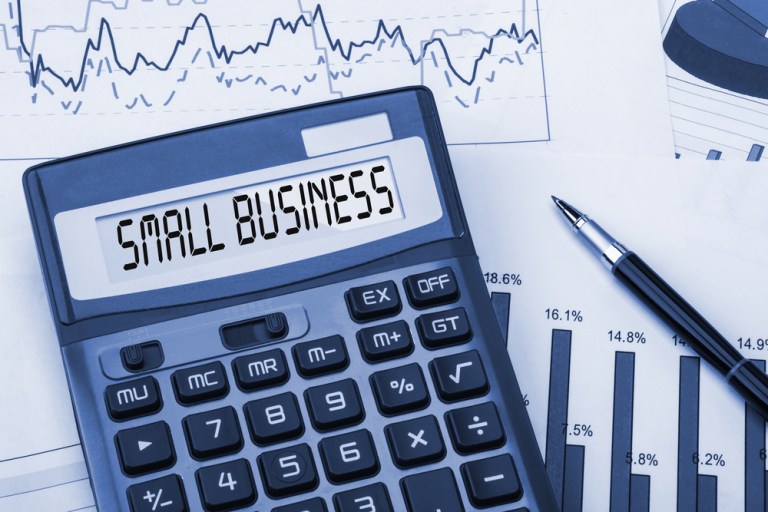
Some of the largest financial institutions came out this week with new statistics on small business sentiment in the U.S. Bank of America, Capital One, Wells Fargo, Chase and more published their findings — sometimes to contradicting conclusions.
Small business sentiment is perhaps the most mixed and muddled metric. Chase reached some optimistic conclusions regarding how small business owners feel about the year ahead, while Capital One highlighted a 9 percent decline in SME optimism.
One constant is the ongoing presidential election, cited by several reports as the top concern among small business owners. Entrepreneurs expect a big impact from the race and its outcome and, so far, are underwhelmed with the candidates.
It’s a messy picture when leading surveys draw contradicting conclusions. Dive into the data below to make up your own mind.
250,000 small businesses are targeted by cybercriminals, say researchers at JAVELIN. The firm published its 2016 Small Business Fraud Report, emphasizing the risks that small businesses face in back-office fraud. Each small business lost an average of $12,139 last year, amounting to a collective $3.1 billion in losses due to crimes like unauthorized payments, fraudulent wire transfers or misuse of company credit cards. Small businesses are also found to be adopting anti-fraud tools more slowly than larger companies, researchers said.
69% of small business owners are optimistic about the year ahead, found Chase for Business in its 2016 Business Leaders Outlook report. The majority reported feeling optimistic about their local economies, but less than half (43 percent) said the same about the national market. Even fewer (27 percent) said the global economy is on the right track. Larger businesses were found to be even less optimistic about the coming year. A quarter of respondents said they are looking to bring on more full-time staff, while small businesses also eyed financing and mobile banking as key initiatives to grow this year.
29% of small businesses expect national economic improvement this year, found Bank of America’s 2016 Small Business Owner Report — that’s a lot less than Chase’s 43 percent reporting optimism for the national economy. BoA’s report pointed to the presidential election and its impact on small businesses, finding that 67 percent of survey respondents cite the race and its outcome as having at least a “somewhat” significant effect on their business. Further, 80 percent said they’re concerned about the government and its ability to bring effective leadership across government branches.
28% of small businesses say presidential candidates address their concerns, a concerningly low figure, according to researchers at Wells Fargo and Gallup, adding more insight into Bank of America’s analysis on the impact of the election on the SME community. The statistic was released as part of a larger report on small business sentiment, with a poll addressing the implications of the ongoing presidential race on small business owners. Despite so few reporting that the candidates are addressing topics of importance to them — like tax regulations and economic policy — 87 percent said they are following the elections either very closely or somewhat closely, higher than the national average, researchers said.
13% of small businesses in the manufacturing sector don’t have growth plans, a promisingly low figure, said Aldermore in its SME Outlook 2016 survey. The report suggests that small businesses in manufacturing are especially optimistic, with 45 percent planning to invest in new assets over the next five years and 31 percent planning to increase staff in order to grow.
11 out of 18 sectors are seeing a decline in small business borrowing, according to the latest figures from Thomson Reuters and PayNet. The findings question Chase’s conclusions that SMEs are looking at external financing to grow this year. Thomson Reuters and PayNet released their latest Small Business Lending Index, which saw its sixth decline in the last nine months, reports said. Analysts said the statistics suggest small business owners are not willing to take on the risk of borrowing money to grow their companies. They may be warranted in that fear. According to PayNet, the percentage of small business loans more than 30 days past-due increased slightly between February and March of this year.
9% fewer small businesses are optimistic about the future, stated a new report from Capital One, which found 41 percent of SMEs feel good about current conditions. The firm released its Spark Business Barometer, which found the decline in the percentage of SMEs that report feeling “good” or “excellent” about current market conditions, compared to the same time last year. There has also been a year-over-year drop in the percentage of small businesses that expect to increase their staff. Still, 39 percent said they expect to be in a better financial position in six months’ time, and 41 percent still say current market conditions are either “good” or excellent.” Small businesses’ top concern? The presidential election, Capital One found.
0.54% more employees worked at small businesses in April than in March, representing a steady increase in small business hiring, according to the CBIZ Small Business Employment Index. Yes, that’s despite Capital One’s conclusions of a steady decline in small business hiring. CBIZ noted that its analysis shows a new peak in SME employment for the year, though acknowledged separate data that revealed larger employers less adamant about boosting staff levels.
A 0.4% uptick in the IHS Small Business Jobs Index may not seem like much, but according to payroll company Paychex, which commissions the index each month, that slight increase this year represents a steady climb of small business employment this year. The index recorded a 0.28 percent jump in January, steadily climbing ever since. Paychex expects the index to continue to be “pretty steady” this year, though small businesses are particularly concerned with new regulations, like changing overtime compensation rules.